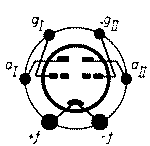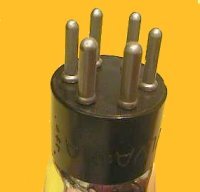
UZ12C
|
|
|||||||||||||||||||||||||||||||||||
|
Hits: 758 Replies: 2
Same pinout is US type 19
|
|
|
Joe Sousa
21.Jun.19 |
1
As can be seen by comparing the 6 pin base of the UZ12C to the octal pentode of base like that of a 6F6, the base pinout does not match the photo. According to one email from Ed Lyon: "Hi, Joe, I wrote a short piece a few months ago about Japanese WW2 radios. One of my radios uses a tube labeled UZ12C, and in the article I wrote that my Radio Tube Encyclopedia by Babani lists that tube as identical to the 6F6 power pentode tube. This is wrong, of course, since the socket in the radio is an old 6-pin American style. ..." The correct pinout is the same as for the US type 19 or Japanese type UZ30MC. Regards, -Joe |
|
Jacob Roschy
21.Jun.19 |
2
Hi, Joe, I've changed the corresponding specifications. Now it would be desirable to know heater / filament voltage and current. Regards, |
|
Joe Sousa
22.Jun.19 |
3
Hi Jacob: Ed Lyon says the filament of his tube is wired directly to the labelled 6V battery, so the filament voltage must be 6V. Normally, it would be difficult to operate a dual triode in any kind of push-pull arrangement with a 6V filament, especially with the relatively low HT derived from batteries. A 2V filament would bias the two triodes nearly the same for push-pull operation. But this tube was employed in a single tube transmitter, so the push-pull issues were not a consideration. Regards, -Joe |
End of forum contributions about this tube
| Data Compliance | More Information |



